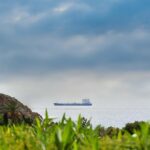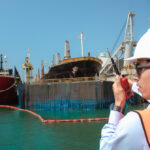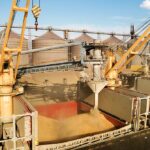In the International Maritime Solid Bulk Cargoes (IMSBC) Code, cargoes that can liquefy or dynamically separate are classified as Group A cargoes.
This includes cargoes such as iron ore fines, nickel ore, mineral concentrates, and bauxite fines. However, any cargo with fine particles and sufficient moisture may pose a risk. To mitigate these risks, the IMSBC Code provides guidance on measures to be taken. In light of several incidents that have occurred internationally in recent years, we wish to highlight the most important of these measures:
- Shippers’ Declaration: The IMSBC Code requires cargo interests to provide the master with a Shippers’ Declaration containing appropriate and up-to-date cargo information before loading. This must include both the Transportable Moisture Limit (TML) of the cargo and its moisture content at shipment.
- Moisture Content: The moisture content of the cargo must be determined by drying samples in accordance with the Code. If the moisture content of the sampled cargo is below the TML, the cargo should be safe to load. The moisture content values are typically considered valid for seven days from the date of sampling unless the condition of the cargo changes, for example, due to heavy rain or snow.
- Flow Moisture Point (FMP): The advance cargo declaration must state the “Flow Moisture Point (FMP)” of the cargo. The FMP is the maximum water content, expressed as a percentage, at which a sample of cargo will begin to flow. Cargoes with moisture content close to, equal to, or in excess of the FMP may liquefy or dynamically separate. Loading cargo above, at, or near its FMP presents an unacceptably high risk for vessels, which is why a safety margin is included in the test methods.
- Transportable Moisture Limit (TML): The TML is a percentage of the FMP value. When determined by the Flow Table Test (FTT) or the penetration test, the TML is set at 90% of the FMP. When determined by the Proctor/Fagerberg method, it stands at either 70 or 80% of the FMP, depending on the test method.
From previous incidents reported to us, we note that discussions often arise regarding the Shippers’ Declaration, particularly about whether the sampling used was “representative.” The IMSBC Code states that sampling and testing procedures should be developed based on the cargo’s properties and approved by the competent authority in the country of origin (or port of loading). This means that sampling procedures may vary from port to port. It is recommended to inquire as to which procedures are applicable to the particular cargo in the respective port of loading.
Finally, there are several steps that the crew can take to inspect the cargo, including:
- Performing a “can test”, which involves filling a can with sampled cargo and repeatedly banging it on a hard surface to check for excess moisture.
- Monitoring the cargo condition during loading to look for signs of excess moisture, such as cargo lumping, stow slumping or flattening in the hold, or cargo spatter on the hold bulkheads.
- Suspending operations during rain or snowfall to prevent unnecessary exposure to moisture.
- Contacting the office or the NNPC if the cargo has been left in open storage before loading, and there are concerns that it may have been exposed to excess rain after the issuance of the Shippers’ Declaration.
We recommend ensuring that the Shippers’ Declaration is disclosed well in advance of loading to allow sufficient time for its review, checking the date of issuance, and confirming which party performed the analysis. For further information, we refer to the publication from NorthStandard, “Bulk Cargo Liquefaction and Dynamic Separation.”
Should assistance be required, members are invited to contact us at claims@nnpc.nl.





